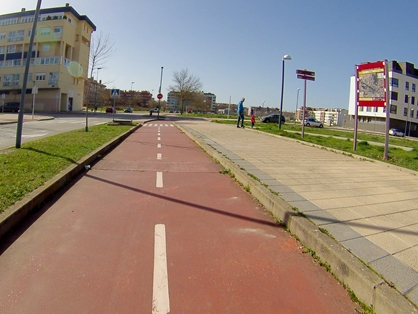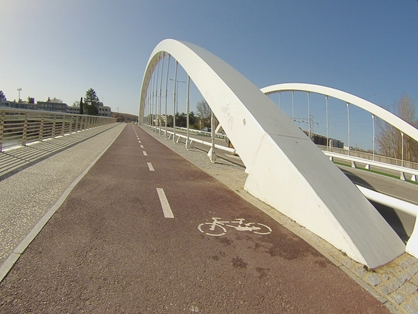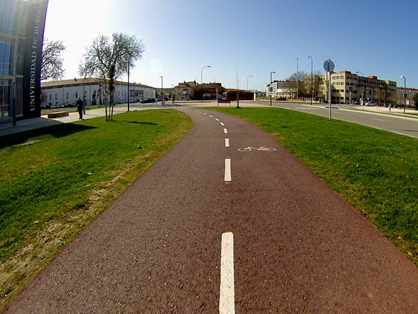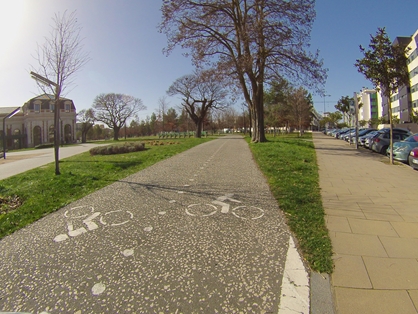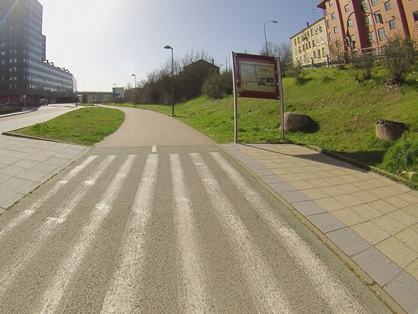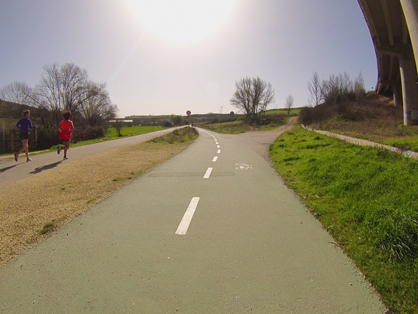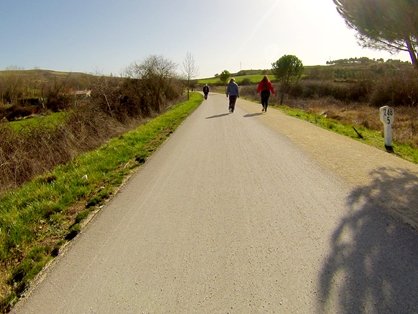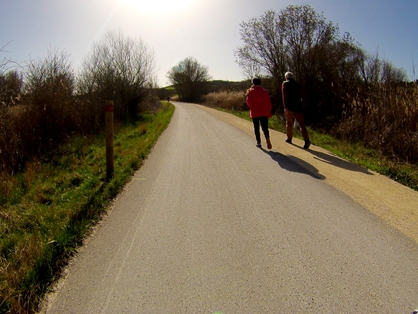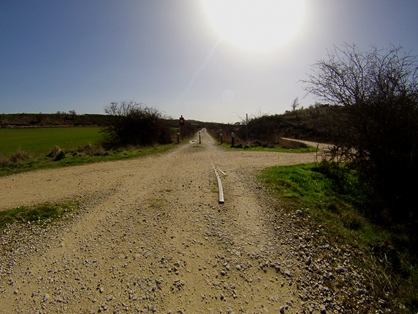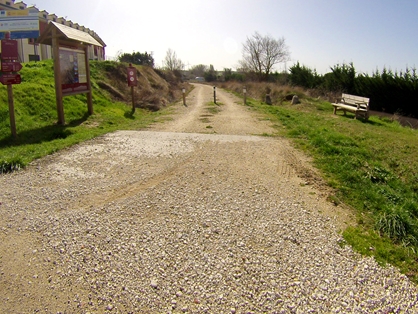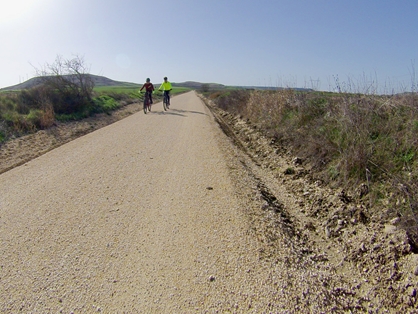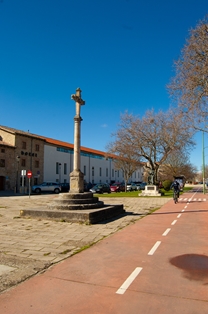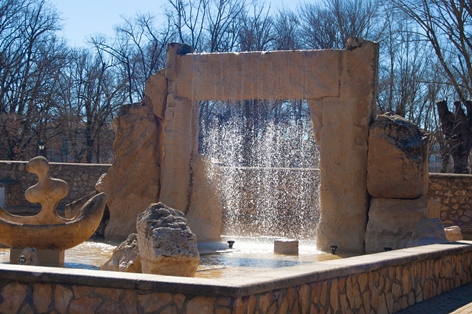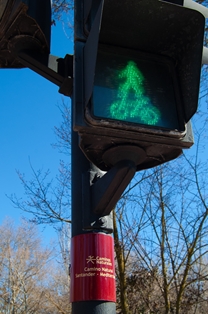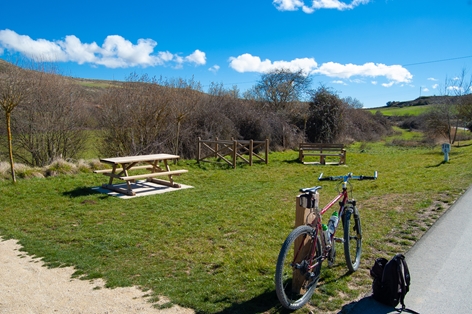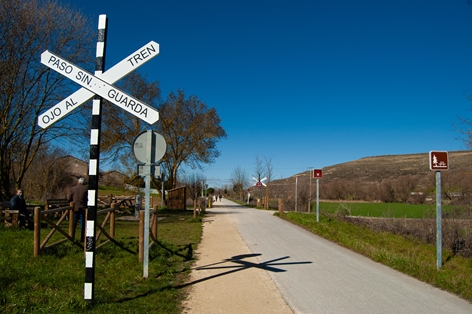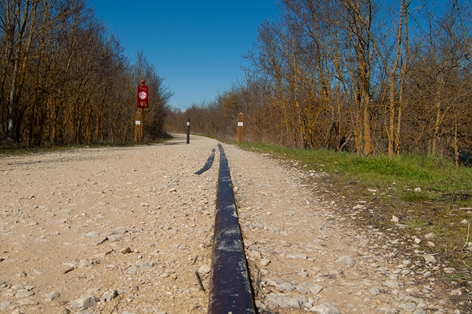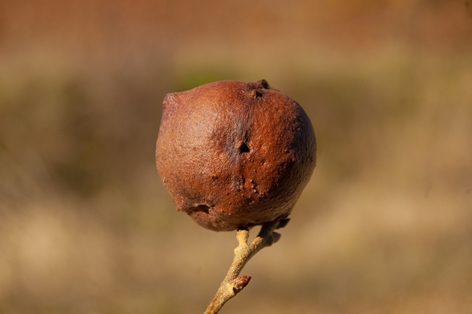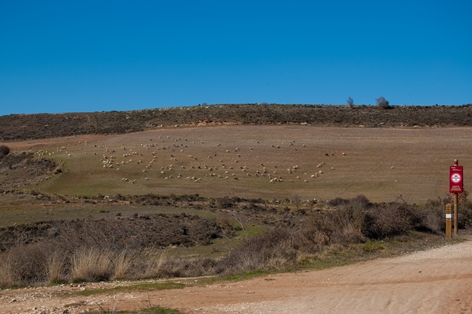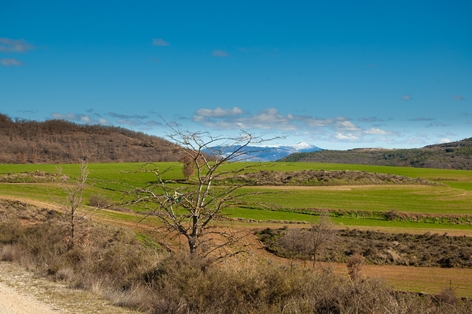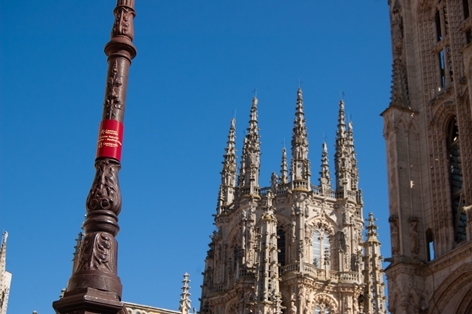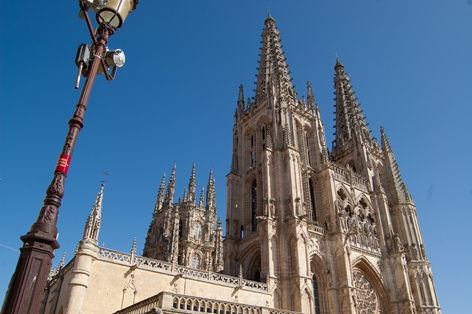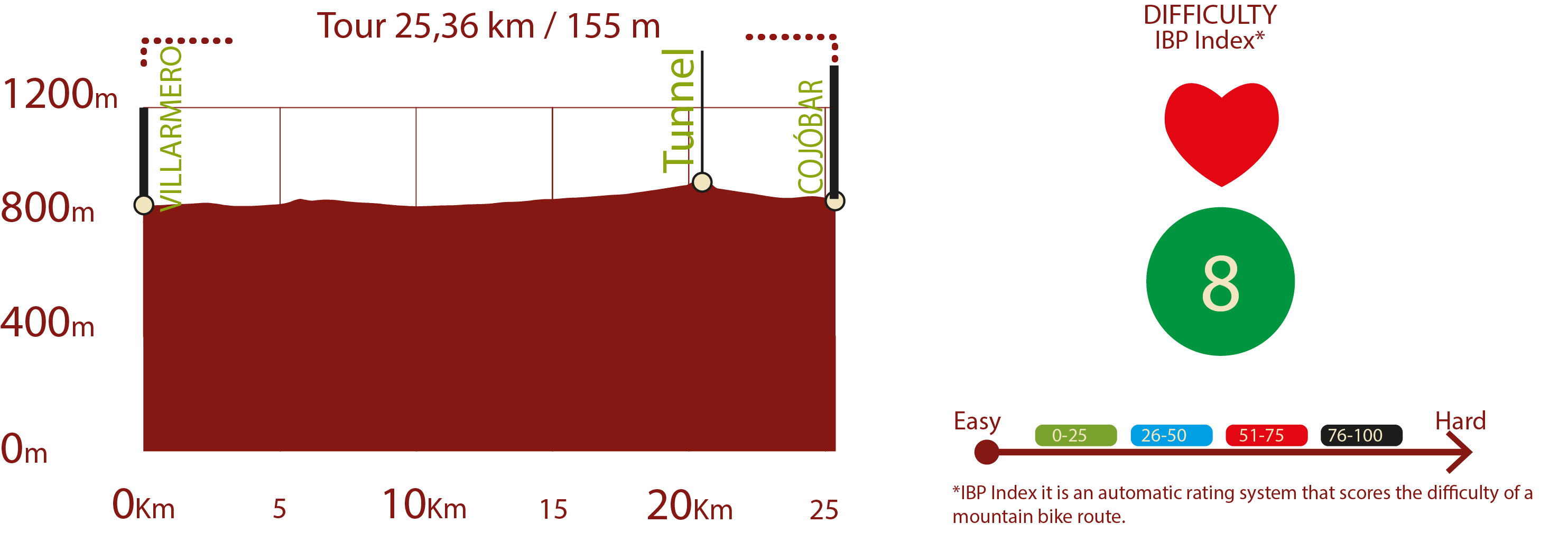- Home
- Rural Development
- Nature Trails
- Nature Trails
- Northwest Sector
- Santander-Mediterráneo
Santander Mediterráneo Nature Trail. Villarmero - Burgos - Cojóbar section
Description

The Santander – Mediterranean Sea railway journey dresses up on its way through Burgos
This part of the old Santander – Mediterranean Sea railway route features the passage through Burgos, where other great journeys and travellers converge, such as the Camino de Santiago, the Camino del Cid or the Camino de San Olav, which will allow experiences and anecdotes to be shared under the incomparable setting of the monumentality of the city of Burgos.
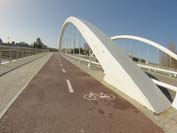
The section of the Nature Trail begins after the BU-V-6279 road where, a few metres further on, an information panel informs the traveller of this part of the route. As is usual on old railway lines, the entire route has very gentle slopes, both uphill and downhill.
In the first kilometres of the route, through cereal crops, you leave behind the villages of Villarmero and Quintanadueñas, both on the right of the route, and the old Villarmero station, which has a rest area. The route crosses the BU-30 ring road over an elevated bridge and, shortly afterwards, reaches the Villalonquéjar industrial estate, where the route splits in two and is suitable for cyclists and walkers at all times.
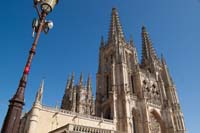
Once the industrial section is finished, the route continues along a cycle lane that will take walkers and cycle tourists to the city of Burgos. After the first houses, the routes separate again, with cyclists continuing straight on along the cycle path and walkers turning left.
Its immense architectural and cultural heritage makes Burgos a must-see and a stop on this tour. Among this heritage, its world-famous cathedral undoubtedly stands out; it was declared a World Heritage Site by UNESCO in 1984 and, much earlier, at the end of the 19th century, a National Monument. Burgos is also a place of passage and enjoyment of other important national and international routes. The Camino de Santiago, specifically the French Way, provides the city with the passage of pilgrims. The Camino del Cid is another example; it begins with the exile of Rodrigo Diaz (el Cid), a native of the nearby town of Vivar del Cid. The Camino de San Olav, which begins in the city of Burgos and ends at the original hermitage of San Olav, was inaugurated in 2011 in the Valle de los Lobos located in the town of Covarrubias.
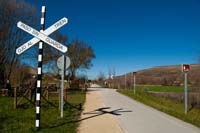
As well as being a university city, Burgos' culinary wealth becomes a great attraction for the vast majority of visitors. They cannot leave without tasting some of its delicacies, such as roast suckling lamb or its delicious black pudding, both with Protected Geographical Indication (PGI) for their quality and tradition; all combined with its famous wines from Ribera del Duero (PDO) and Arlanza (PDO).
After a good meal, travellers move on through the city of Burgos where, just before the old Burgos railway station, the cycling and walking routes meet again. Travellers will only have to let themselves be guided through the city by the plaques on the street lights to find the path that will take them out of the capital of Burgos, which will remain stuck in their minds.
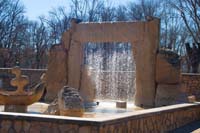
In this stretch close to the city there are several rest areas (Los Pisones, Rompizales, etc...) that offer rest and relaxation to children and adults, and many of the residents of Burgos, due to their frequent use, will accompany travellers on their walk, making the trail a bio-healthy route.
The path, again flanked by crops, runs parallel to the River Cardeñadijo with its modest flow and its small gallery forest embellishing the landscape. In order not to forget the railway calling of this journey, at some crossroads small sections of rail have been preserved embedded in the road, which in no case reverse any difficulty or danger, but they do make travellers go back in time imagining the rattle of the train.
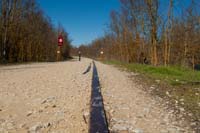
Shortly after kilometre point 14, the old Cardeñadijo station introduces the visitors to the village with the same name, above which the church of San Martín Obispo dominates the landscape. As it is very close to the capital, the gastronomic offer is made up of similar delicacies that will delight travellers.
After passing through this beautiful and peaceful village, the route continues gently uphill, with the Mediterranean scrubland and its wide range of aromatic plants gradually making their way through the dry cereal crops.
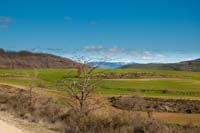
Without further ado, the Modúbar de la Emparedada tunnel is reached. This former railway infrastructure, which is 590 m long in a straight line, allows the exit to be seen from the entrance, so it has no artificial lighting. In any case, it is advisable to bring a torch, especially if visitors are travelling with children.
After the tunnel, the route descends slightly towards the village of Modúbar de la Emparedada, delighting travellers with spectacular views that on clear days allow the foothills of the Sierra de la Demanda to be made out. In addition, the peace and tranquillity of the route is enhanced by the leisurely grazing of the flocks of sheep on the slopes, benefiting from the pastures in the area.
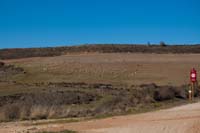
Shortly after travellers enter Modúbar de la Emparedada, they will find the old railway station. In this small town which, as can be seen in the Neolithic site of Altotero, has been inhabited since ancient times, the Modúbar de la Emparedada Museum, known as MUMO, stands out. This museum presents a new concept, as it allows visitors to visit 24 hours a day by means of an access code. The museum belongs to the Leader cooperation project "MUSEOS VIVOS" promoted by Local Action Groups (LAG) of Castilla y León, with a wide range of thematic museums, interpretation centres and other places of interest spread throughout Castilla y León.
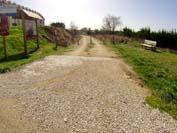
Returning to the old railway line, and shortly after leaving the town of Modúbar de la Emparedada, the route turns south, facing the final stretch of this route which ends after crossing the BU-V-8013 road at the entrance to Cójobar. Here, an interpretative panel provides information about this section and the next one, between Cójobar and Cascajares de la Sierra.
Map
Puntos de Interés
Cultura
Hidrografía
Orografía
Profile
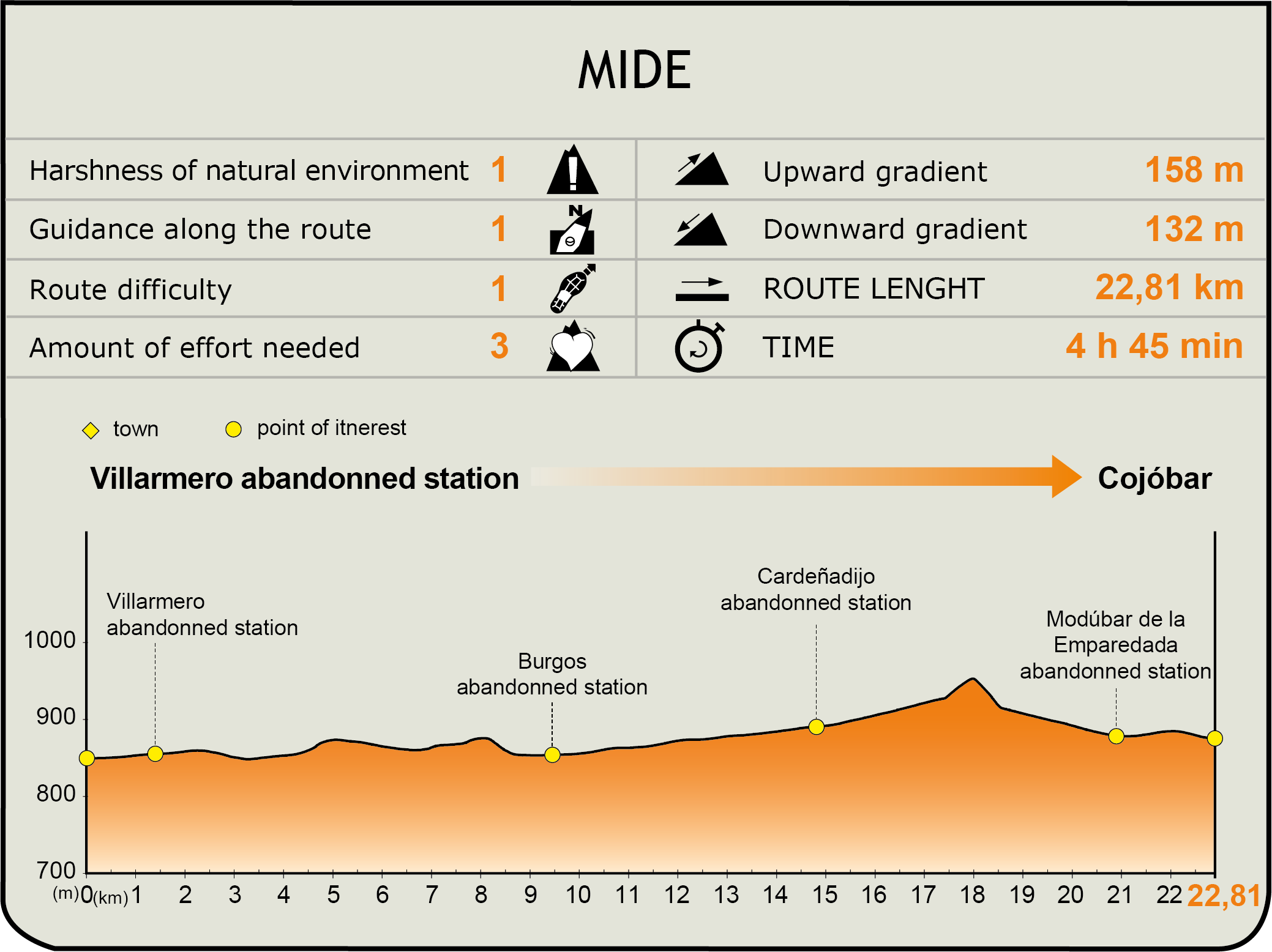
MIDE (Method for the Information of Excursions)
Featured
Further information
Burgos
This Castilian-Leonese city and capital of the province of the same name is considered the cradle of the human being in Europe due to the fossil remains found belonging to five different species of hominids. The site of Cerro del Castillo and the nearby Atapuerca site, declared a World Heritage Site in 2000, also prove the presence of human beings in this land since prehistoric times.
It was the capital of the kingdom of Castile under the reign of Ferdinand I and, for a few months, the capital of Spain in 1939. Due to its geographical location, it has always been of great interest from a commercial point of view, and currently has an important industrial fabric, which is one of the pillars of its economy.
The city's architectural heritage is innumerable, which provides the city with a great tourist attraction, a sector which is also of key importance for its economy. At the top of this heritage is, without a doubt, the Cathedral of Santa María (World Heritage Site since 1984), and an endless list of monuments, such as the Cartuja de Miraflores, the Monastery of Las Huelgas, the Arch of Santa María or the monument to the Cid Campeador.
This modern city, with an important university and a great and varied transport network, it is also a stopping place for national and international routes such as the Camino de Santiago and the Camino del Cid. All this makes it an ideal place to live and visit, enjoying its enormous gastronomic offer and its patron saint festivities on 29 June in honour of St. Peter and St. Paul.
Multimedia
Downloads
GPS downloads
Brochure and maps
Cyclability
PROFILE & DIFFICULTY
SAFETY RECOMMENDATIONS
-Extreme caution should be exercised on the 2.5 km long section of the Villalonquejar industrial estate on the 30 km/h regulated cycle lane shared with motor vehicles.
-The urban section of the city of Burgos runs along a cycle lane with no technical difficulties whatsoever, only at the numerous crossings of roads and streets within the city with motorised traffic, caution should be exercised. All these crossings are perfectly signposted and some of them are equipped with traffic lights adapted for cycle tourists.
-After kilometre 17 of the route, there is a 590 m long tunnel with no artificial lighting.
GENERAL RECOMMENDATIONS
-Find out about the technical aspects of the route and the weather on the day.
-Take care of the environment. Take care not to disturb animals or damage vegetation. Respect private areas.
-You must give priority to pedestrians and comply with general traffic rules.
-The environment in which you will be riding is open, free to move around and an area where many activities are carried out (sporting, forestry, livestock and agricultural activities). Always have an understanding, prudent, responsible and respectful attitude.
